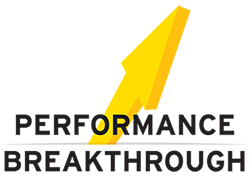“Selling’s hard,” she moaned, shoulders drooping. “I get told “No” a lot more often than “Yes” and I’m not sure how long I can keep this up.” How many times have we heard comments like this from a sales person? Selling is hard, but for many it’s harder than it needs to be. With a proper mindset and the right approach, sales can occur much more “naturally.” So what does it take to be successful at sales?
1 – Sales Requires a Buyer’s Mindset
Many sales people have a selling first mentality, focusing primarily on their products and services. Their approach is all about the sale, the transaction itself…closing the deal. I’ve heard it termed the NIGYYSOB (“Now I’ve got you, you SOB”) mentality. A more appropriate mindset is that of an “assistance buyer,” which is all about helping your prospect understand their challenges and address their problems. This approach requires getting to know each other, building rapport, and discovering the prospect’s wants and needs, instead of merely “throwing up on them” about your wonderful products and services. Jeffrey Gitomer says that “People don’t like to be sold, but they love to buy.” If you can help solve their problems versus merely trying to sell them something, your chances of success increase substantially.
2 – Selling Takes Time
Sure, some sales happen quickly, but they are the exception. Relationships need fostered, trust and credibility developed, and an understanding of each other’s needs and wants gained. Typically, all of this takes time, and frequently it takes lots of time, involving multiple contacts or “touches,” as shown by these sales statistics (if you are not familiar with them they might surprise you):
- 2% of sales are made on the 1st contact
- 3% of sales are made on the 2nd contact
- 5% of sales are made on the 3rd contact
- 10% of sales are made on the 4th contact
- 80% of sales are made on the 5th to 12th contact
If you believe these numbers, what do they say about your sales process? If it is true that only 1 in 5 sales occur before the 5th contact, what do you need to change? Are you staying in touch and adding value throughout the entire buying/selling process or are you pushing too hard or giving up too soon?
3 – Selling Needs Tracking
Sales people don’t always effectively track their sales activities. However, there are some fairly simple metrics that can be utilized. At a high level, T. Scott Brumley recommends the following five ratios for tracking the effectiveness of a sales person or entire sales team:
Ratio 1: Total sales compensation/gross sales = direct selling costs (%)
Ratio 2: Gross sales/total hours worked by salespeople = sales dollars per hour
Ratio 3: Number of sales/number of full-time-equivalent salespeople = number of sales per salesperson
Ratio 4: Gross sales/number of full-time-equivalent salespeople = sales dollars per salesperson
Ratio 5: Gross sales/number of sales transactions = average sales dollars per transaction
In addition, at a more tactical level, utilize metrics such as:
- Number of new connections made with targeted decision makers
- Number of meetings and conversations held with targeted decision maker
- Total number of contacts made with targeted decision makers (see sales statistics above)
Tracking can help you pinpoint the problem, analyze it, and take action. If these particular ratios are not applicable to your business, then I challenge you to identify which ones are. Whether or not you currently have a sales plan, the numbers you get from these measures might be used to develop sales quotas or targets.
4 – Selling Requires Management
Sales managers need to be hands-on and spend as much time with their sales people as possible. Regular “one on one” meetings are an effective way for both parties to monitor sales activities and targets. Sales guru Hal Becker recommends four areas to cover each and every week:
1. Go over the previous week’s sales and the sales person’s weekly goals. Look at the sales person’s calendar for the week that just ended to gage level of activity and results.
2. Plan the next week’s activity and short-term goals. Look at the sales person’s calendar for the coming week to see what they have scheduled.
3. Take a look at the sales person’s list of prospects. Match sales calls with prospects or orders to see what has closed, what is pending, and what new prospects have been added.
4. Ask the salesperson what areas he or she thinks need improvement.
The more knowledgeable sales managers are about progress towards sales goals, the better that priorities and activities can be adjusted to improve results.
5 – Selling Demands Consistency
Most sales people and sales managers are not consistent: they do not do the right things all the time. It’s been said that “Consistent persistence will win out over talent every time.” Don’t let paperwork, e-mails, budgets and all the “office stuff” keep you from doing your job! Sales requires discipline at prospecting, making calls, meeting with contacts, providing support, issuing proposals when necessary, relationship-building, and getting commitments for sales. Discipline must be used to perform these activities all the time, not just when sales are slumping. Have a plan that works for you and stick to it. Schedule time and put the appropriate activities on your calendar, and then execute on those actions to maintain forward momentum. Be proactive and constantly measure progress against your goals.
Sales can be relatively easy if we focus on what we want to learn about our prospects and how we can address their issues. Sales people often have their own way of doing things, but rarely is this done consistently. Follow the above recommendations to improve the health of your sales process and get better resu
